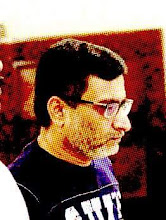
This is a very easy to use, clear and practical guide to constructing the figure from imagination.
"Classic approach" here simply means the methods that have been handed down from the Masters of the renaissance, where art and science came together. For instance, ideas of perspective, which are analytical and mathematical, were applied to art to create realism.
Similarly the constructive approach is based somewhat in the lines of geometry, and attempt to reduce all objects and forms to be a composition of a few basic forms. This resulted in the usage of sphere, box, cylinder etc. to construct any three dimensional figure, including of course the human figure. There were no hard and fast rules as to what these basic forms were. Some would use cones, cuboids etc.
This book is a very clear exposition on the use of constructive approach to drawing the figure.
The Figure is analyzed using the basic forms first, to get a sense of proportion, relationships etc.
The idea of using two glasses (glasses with which we drink water etc.) as the two parts of the body: the upper torso and the pelvis, is amazingly an effective tool, in studying the relationship of these two major forms of the figure. same is done to study the upper and lower arms, upper and lower legs.
The book aids in seeing the figure as made up of these simple forms, which results in clear understanding of the underlying structure which is easy to cast into memory, and can be applied both in life drawing as well as drawing from imagination.
There are parts of the book that deals in details about the body and the movable parts. the possible movements of individual parts, in relation to the others, such as how much the arm can swing, or the degree of freedom of each part of the leg, are invaluable lessons, that are very explicitly laid down using the simplified figure.
Eventually the book takes us to an application of anatomy, though not a anatomy book, this teaches how to use a simplified skeleton to setup the figure and move towards more realism.
If we go through this book, one can be assured of getting a "solid" understanding of the figure, in very simplified terms yet powerful enough to create stunningly realistic figure from imagination.
One would learn from the book, apply this knowledge when drawing from life or photo reference, and then internalize that knowledge and start creating figures purely from imagination.
Walt Reed was part of the amazing Famous Artists School of the 50-60s. The Figure drawing lessons in those courses are pretty much what is contained in this book. I would think this book contains a bit more than those lessons, more reference images, and more instructions.
This is a must have in the figurative artist book shelf.
This is an extract from my review at Amazon.com, You can find more of my reviews here.








